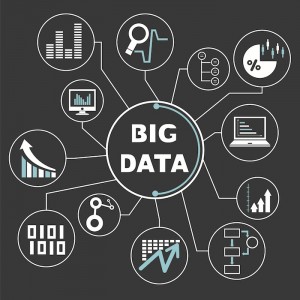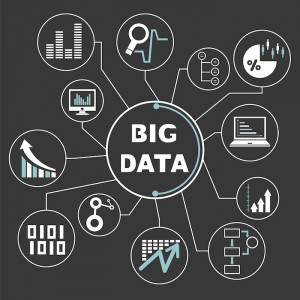 The rise of "Big Data" has dramatically changed how businesses approach product marketing. From increasing conversions to developing entirely new products, there is almost no limit to the amount of information brands can collect about their customers.
The rise of "Big Data" has dramatically changed how businesses approach product marketing. From increasing conversions to developing entirely new products, there is almost no limit to the amount of information brands can collect about their customers.

The following answers are provided by the Young Entrepreneur Council (YEC), an invite-only nonprofit organization comprised of the world’s most promising young entrepreneurs. In partnership with Citi, the YEC recently launched #StartupLab, a free virtual mentorship program that helps millions of entrepreneurs start and grow businesses via live video chats, an expert content library and email lessons.
Make Smarter Product-Related Decisions
We really value mobile analytics. We first learn where users are coming from and how they’re interacting to decide what mobile product we should build. Are they coming from a tablet more than a phone? iPhone over Android? You can’t argue with analytics.
— Bobby Emamian | Prolific Interactive
Guide More Meaningful Actions
While it's easy to focus too much on analytics checking, what analytics data provides for you is accurate and objective data on how you're doing. For instance, after reviewing some sales data recently, I found that our most expensive legacy product was tied as our second-best seller. I wouldn't have guessed that and now can redirect focus. Analytics data helps guide meaningful action.
— Charlie Gilkey | Productive Flourishing
Use Social Media to Drive Product Development
We work with a lot of companies that are turning to social media to drive product innovation. By analyzing what people like and dislike about your competitors through social media, you can find gaps to fill with your own products or services, along with ways to market your company from a unique perspective.
Test "Crazy" Ideas More Often
The biggest advantage about having easy to install and analyze analytics is you can try crazy ideas much more often. When we sit around the table suggesting split-test ideas, almost everything is taken into consideration if it can be properly defended. "Let's just test it" is easily the most common sentence you'll hear during those meetings.
— Liam Martin | Staff.com
Practice Constant Iteration
A/B testing and data mining allows us to tinker and improve at all times — and on nearly everything, from article headlines to pop-up button text.
Build Products for Customers
Now that we know more about our customers through surveys, advertising data, split testing, Google Analytics, Facebook Insights and MailChimp, we build our products specifically for our target market. We have greater insights into what our customers want and what interests them through their web behavior, and we can build products around these behaviors.
Look at Trends in Analytics
We use analytics constantly in every aspect of marketing, starting with strategy. By looking at trends in data, from where a certain demographic spends time, to the words they use to describe things, it is possible to come up with a picture of how things were going and how they will likely change in the future with far more accuracy.
— Caitlin McCabe | Real Bullets Branding
Know Instead of Guessing
A/B testing has been a game changer for our company. It has been incredible to learn which changes generate substantial improvements in advertising conversion rates. Half the time, my educated guesses are wrong, and A/B testing on site designs ensures we’re making the right decisions.
Improve Marketing Based on Actual Audience Behavior
Using analytics, we’re able to determine where most of our conversions originate and focus our marketing efforts accordingly. For example, we can tell if our traffic is coming from technology sites or fashion blogs and reach out to the appropriate outlets. It also helps us with product design and development since we know more about who our customers are and what they’re interested in.
— Tracy Foster | ONA
Utilize Targeted Advertising
We spend advertising dollars on thousands of job postings around the country, and the data allows us to adjust our spending at such a granular level that we can change our advertising spending on a per-job basis. We can see patterns of what job seekers are looking for, and then target more jobs in that area in real time.
— Jeff Berger | Doostang and Universum Group
Analyze Data to See What the Market Wants
Oftentimes, marketers and copywriters are too confident in their ideas, but the proof is in the results. Our marketing is split tested; we constantly analyze data to find out what our market responds to most. It's important to consider all the factors involved — if test B results in more sales than test A, it doesn't necessarily mean test B is the best campaign.
— Joe Barton | Barton Publishing
Test Features Even Before Building Them
The biggest waste in startups is building things people don't want, so we use Google and Facebook ads to get cheap (or free) traffic to test features before we even build them. Do our customers really want PayPal integration? What about Facebook Connect? We analyze the data to validate our assumptions and make sure we're actually building what our customers want.
— Clay Hebert | Spindows
Track Your Target Market
If you aren't tracking and understanding your business, you can't grow. Testing told us we were wrong about our market's demographics, which led to a change in our marketing message and advertising. We changed the way we produce our products to better serve our niche consumer base. We track how users interact with our sales pages, which has led to a redesign to match how users spend their time.
— Brian Moran | Get 10,000 Fans
Rely on Analytics, But Not Just One Data Point
Data is the driver of smart business decisions, from marketing and communications to web design and product changes. Too many companies look only at one data source. We combine social media monitoring metrics, eye tracking, usability testing, focus groups, surveys, web analytics and many other forms of research to drive truly informed business decisions.

![Black Friday 2014: Is Your Brand Ready for the Online Rush? [Infographic]](https://blog.hubspot.com/hs-fs/hub/53/file-2166364551-png/blog-files/black-friday-2014.png)





![Kate Canada Obregon of Oishii Creative on Social Science and Research [POV]](https://blog.hubspot.com/hs-fs/hub/53/file-2054673623-png/Agency_Post/Blog_Images/wtfuture.png)